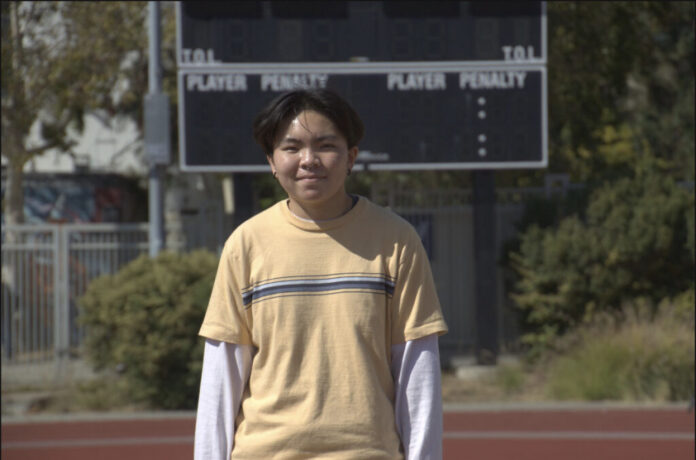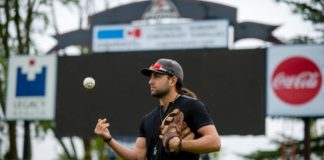“It can sometimes be a little bit weird to be on a women’s varsity team and know that I am not a woman,” said Medina Lam (they/them), a senior on crew, who plays on a gendered team that they do not identify with.
Some athletes within Berkeley High School’s sports program identify as transgender or non-binary, but are on teams that come with labels that don’t fit their gender identity.
One of the benefits of playing sports is the community building that comes from being on a team.
“(The team) is competitive but not toxic, and it’s just fun getting out there and getting exercise,” said senior Abbey Chen (he/they), a student who plays on the women’s lacrosse team but doesn’t as a woman. “I do like that there’s like a community built with the girls team that maybe wouldn’t be the same on the boys team,” he said. “I feel safer on the girls (team), and it’s just a fun experience overall.”
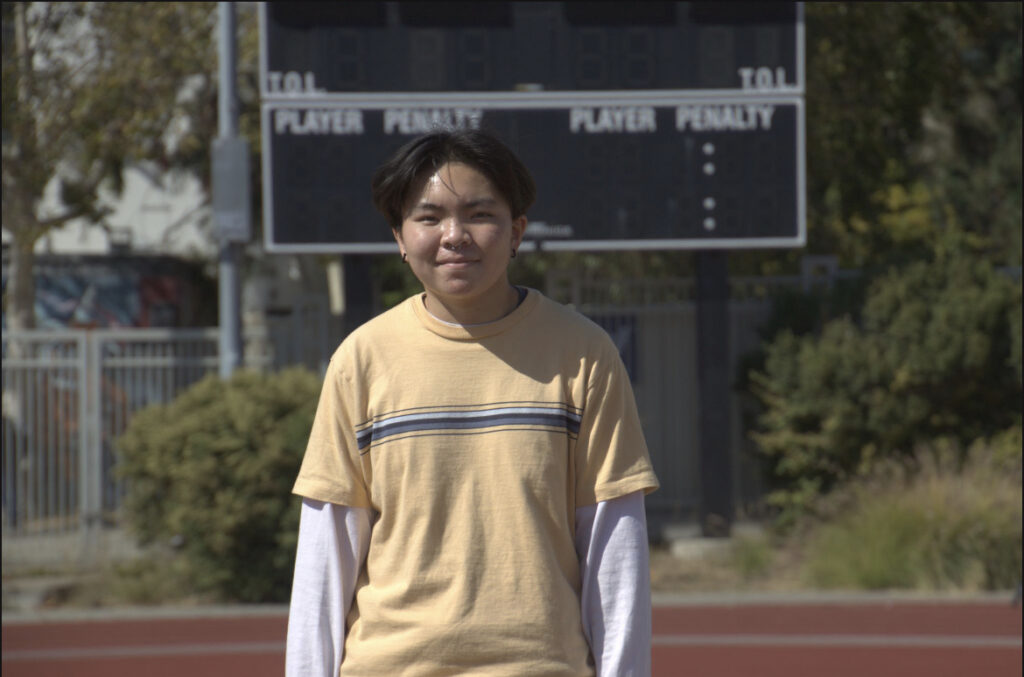
Abbey Chen (he/they) is on the girls lacrosse team.
Emilia Freilich
Some gender-nonconforming athletes find community within their shared identities. “There’s kind of this point of bonding not even necessarily on my team, but with trans athletes, non-binary athletes on other teams, or friends of mine that have similar experiences,” Lam said, “(who) understand what it’s like to be on a women’s varsity team (but not identify as a woman), for example.”
Rowan Nykamp (they/them), a junior on the BHS mountain biking team, said “I haven’t found anybody that hasn’t been supportive about me or anybody else that is trans or non-binary.”
Junior Eliza Harder (she/her) feels similarly on that. “Literally the only (challenge) has been accidental misgendering or misnaming, or just ignorance of the fact that you’re out.”
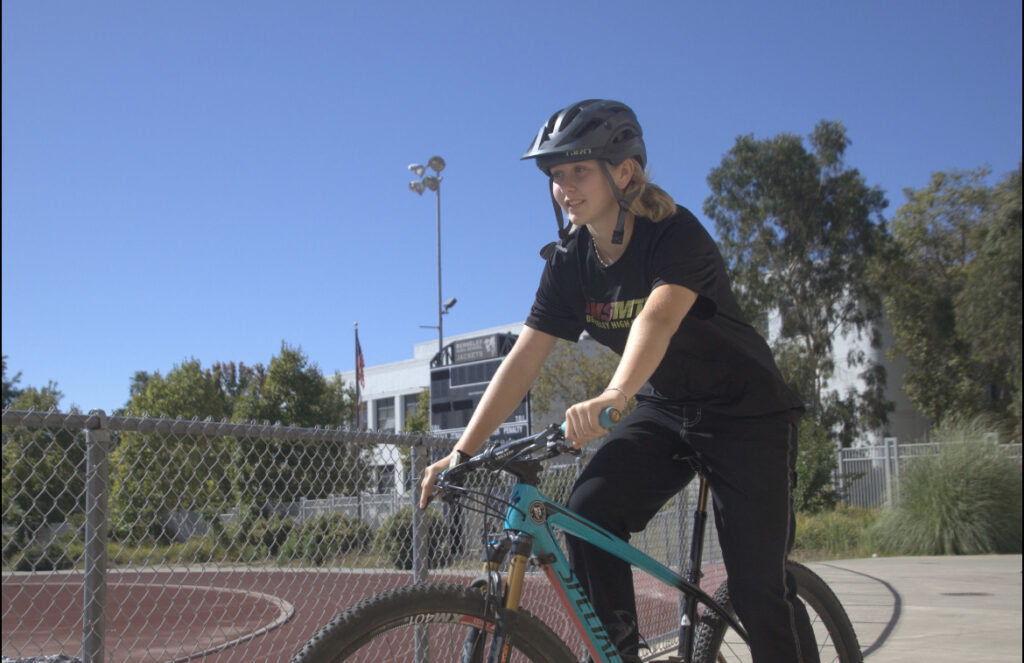
Rowan Nykamp (they/them) is on mountain biking.
Emilia Freilich
“I play on the girls lacrosse team, so (one of) the challenges (is) getting misgendered, since everyone assumes that everyone on the team is a girl,” Chen said.
“The lack of inclusivity of gender-nonconforming students isn’t questioned or challenged by the way the two gendered teams are structured,” Lam said.
“I’m in the girls category, which I’m most of the time okay with, but a lot of times it reminds me that I don’t really fit in the woman identity,” Nykamp said. “It’s just overwhelming if people don’t know my pronouns, and I’m normally not the type of person to really — I’m very quiet — so I don’t try to correct them.”
“My teammates were a lot more understanding than I thought they would be, so they try their best, but sometimes they slip up,” Chen said. “I knew they didn’t do it out of spite, so it didn’t really affect me, but I think what affected me most was (when) coaches (misgendered me). And maybe people on the stands watching the games, they were always yelling and cheering for ‘the girls.’ ”
Lam feels that their gender identity isn’t present on their team. “It’s a women’s varsity team, and there isn’t room for me to not be a cis person. I don’t know if I necessarily need that room, because I am there to play a sport,” they said.
With the lack of transgender and non-binary athletes on most BHS teams, it can make it even more difficult for the few that do participate.
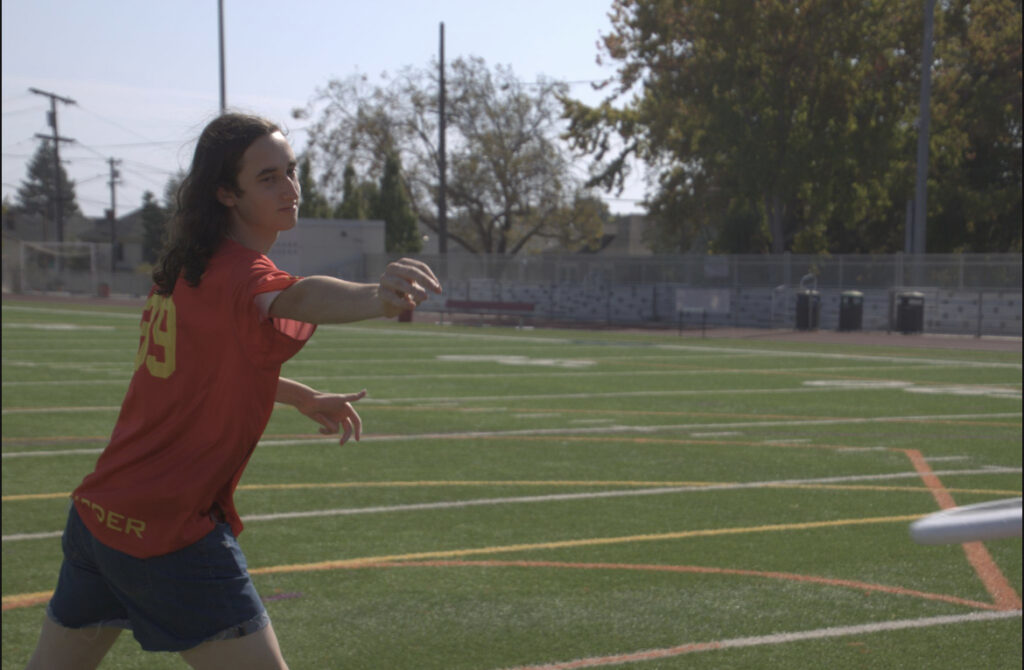
Eliza Harder (she/her) plays Ultimate Frisbee.
Emilia Freilich
“On my team, it feels like I am one of the very few people that is gender-nonconforming, and while the team is full of welcoming and loving people, sometimes it is alienating to be the only person that’s ‘different,’ ” said Lam.
“However, compared to other places around the country, Berkeley Unified School District has tried to be more accommodating to people who aren’t women or men, just in between or neither,” said Chen. “(For example), the mountain biking team has started being more inclusive by saying ‘women and non-binary people’, not just ‘women and men.”
“I definitely think BUSD is more progressive than other states or countries in the world,” Chen said. “So I do feel much safer going to school in Berkeley.”
BHS lacrosse coach Jerem Stothers (he/him) attempts to create as much inclusion as possible on his team by harnessing an environment where students can feel comfortable to express their identities without fear of backlash or discrimination.
“As an out gay coach, I’ve always pushed my student athletes to not just create a positive community for every single walk of life, whether it’s race, or LGBTQ+ identities, or different socio-economic backgrounds, but one that pushes for diversity and accepts diversity,” Stothers said.
Nykamp said that their team has “discussions about stereotypes against men and women. Just having that type of discussion also translates into having a safe gender conversation,” they added.
This brings up the idea that it could be time for BHS to incorporate non-binary and gender expansive teams into the sports program. Chen said, “Sports teams that go out of their way to include trans and non-binary people would be a step in the right direction.”
While being able to see or participate in some version of a more gender-inclusive team could benefit many students, Lam said, “It’s not realistic. For many teams, the amount of genderqueer people on the team is pretty low, low enough that it wouldn’t make sense to have a separate team for that.”
It primarily depends on the sport and the amount of students who don’t identify with either of the gendered teams.
“You should be able to choose what team you get to be on, even if you’re a cis girl and you want to be on the boys team,” Harder said. “Like, why not?”
Ultimately, the true goal of many gender nonconforming students is to be included and understood. “The world is too binary,” Chen wrote in an email to the Jacket. “You have to be gay or straight, a man or a woman. I just want to exist as I am and not have others look at me funny or act as if I don’t belong. I don’t want to be shoved into boxes regarding my identity.”

